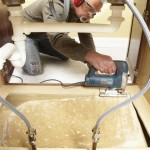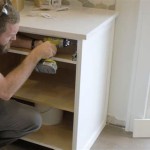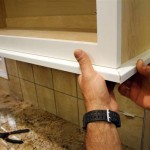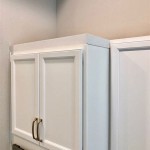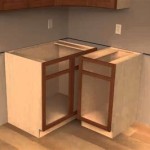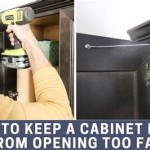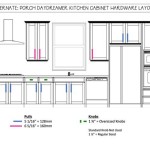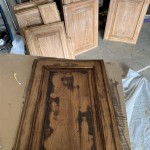How to Measure a Kitchen Cabinet Door Hinge
Accurately measuring kitchen cabinet door hinges is crucial for replacing worn-out hardware or matching hinges for new cabinet doors. Incorrect measurements can lead to misaligned doors, improper closing, and even damage to the cabinet frame. This guide provides a comprehensive explanation of how to obtain the necessary measurements for a kitchen cabinet door hinge.
Before beginning the measurement process, gather the necessary tools. A precise ruler or tape measure, preferably one marked in millimeters and fractions of an inch, is essential. A small notepad and pen are also helpful for recording the measurements. A digital caliper can provide even greater precision for specific hinge components.
The first crucial measurement is the hinge length. This refers to the overall length of the hinge when it is fully opened and laid flat. Measure from the outermost edge of one leaf to the outermost edge of the other. Record this measurement in both millimeters and inches.
Next, determine the hinge width. This is the measurement across a single leaf of the hinge when it is closed. Measure the distance from the outer edge of the leaf to the knuckle or barrel of the hinge. As with the length, record this measurement in millimeters and inches.
The knuckle diameter, also known as the barrel diameter, represents the diameter of the cylindrical part of the hinge that holds the hinge pin. Use a caliper for the most accurate measurement of this component. If a caliper isn't available, carefully measure across the widest point of the knuckle with a ruler. Record this measurement.
The hinge cup diameter or cup bore refers to the diameter of the circular recess in the cabinet door and frame where the hinge sits. Using a caliper, measure the diameter of this circular recess. Accuracy is vital here as an incorrect cup diameter will prevent the hinge from fitting correctly.
The cup depth, or the depth of the recess in the cabinet door and frame, is another essential measurement. Using a ruler, measure the depth of the recess from the surface of the door or frame to the bottom of the cup. Record this measurement.
Another critical aspect is the mounting plate type. Hinges typically come with different mounting plates, such as a standard plate, a wrap-around plate, or a demountable plate. Identify the type of mounting plate on the existing hinge. If possible, remove the hinge and examine the plate for identifying markings or model numbers. This information can be invaluable when searching for a replacement.
The screw hole distance is a crucial measurement for ensuring proper alignment. Measure the center-to-center distance between the screw holes on the mounting plate. Record the measurements for both the length and width of the plate. This information ensures the new hinge aligns with the existing screw holes, avoiding the need to drill new holes.
The corner radius of the hinge refers to the curvature of the corners of the hinge leaf. Some hinges have square corners, while others have rounded corners. Observe the shape of the hinge corners and note whether they are square or rounded. If rounded, attempt to measure the radius of the curve. This detail can be important for aesthetic matching.
The offset of the hinge refers to the distance the hinge leaf extends from the edge of the cabinet door. This measurement is particularly relevant for inset cabinet doors where the door sits inside the cabinet frame rather than overlaying it. Measure the distance from the edge of the hinge leaf to the edge of the cabinet door.
The hinge material and finish are important factors to consider. Common materials include steel, brass, and stainless steel. Finishes can range from polished chrome to brushed nickel to oil-rubbed bronze. Note the material and finish of the existing hinges for a consistent look.
Finally, taking clear photographs of the existing hinges can be exceptionally helpful. These photos provide a visual reference for all the measurements and details, assisting in identifying the correct replacement hinge. Capture images of the hinge from multiple angles, including the front, back, and side. Include close-up shots of the mounting plate and any identifying markings.
While obtaining these measurements might seem detailed, the accuracy ensures the proper fit and function of the replacement hinges. By meticulously recording these dimensions, one can confidently select the correct replacement hardware, resulting in smoothly operating cabinet doors and a cohesive kitchen design.

How To Measure Hinges For Kitchen Doors Kdh

How Do I Measure My Kitchen Doors Beautiful
Measuring Hinge Holes

How To Measure Hinges For Kitchen Doors Kdh

Measuring Hinge Holes

How To Measure Hinges For Kitchen Doors Kdh

Measuring Hinge Holes

How To Measure Your Doors And Drawer Fronts A Guide

How To Measure Cabinet Openings Add Overlay Install Hinges Align Doors Cabinetdoors Com

Door Dimensions And Hinge Requirements
Related Posts

